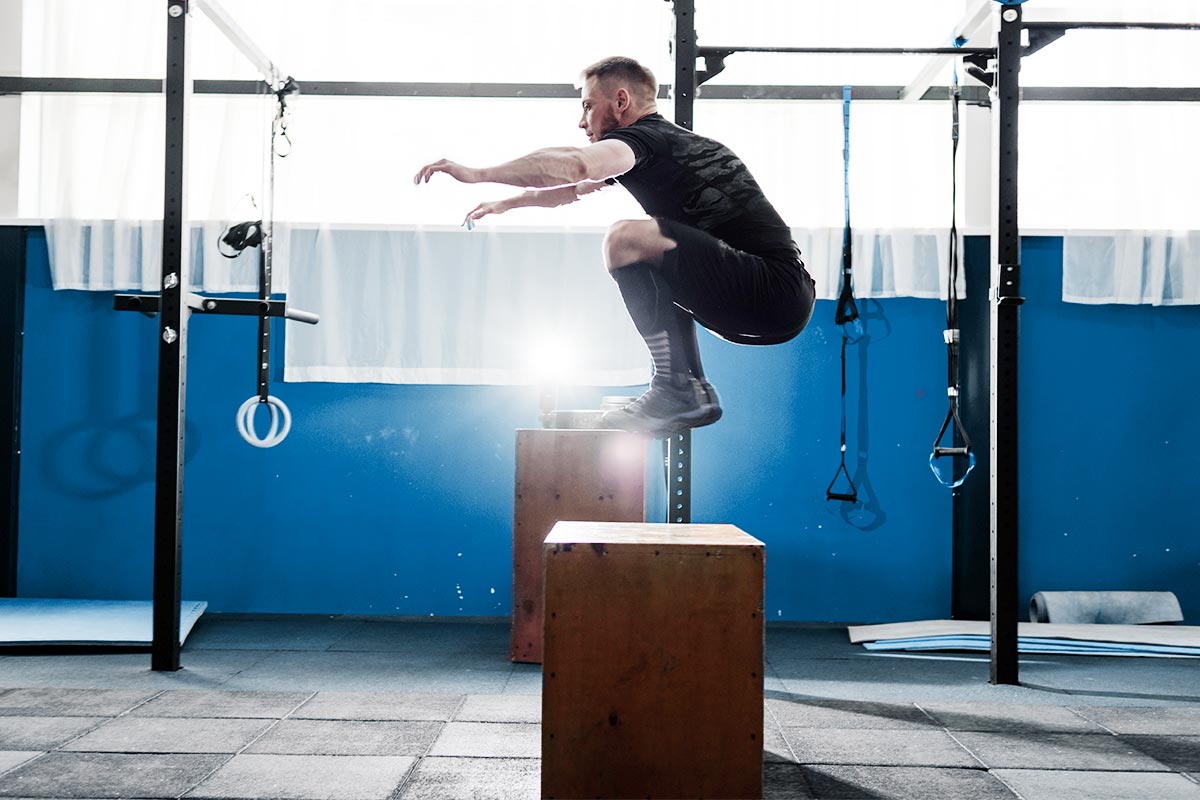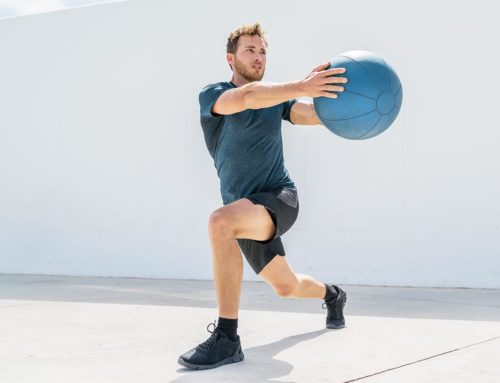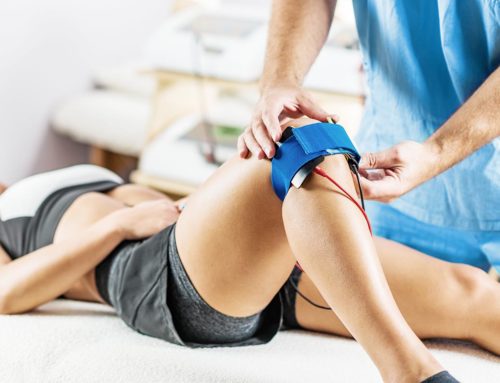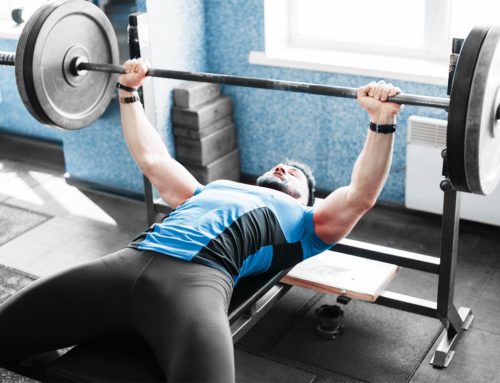What To Do About In-Season Training For Hockey?
Strength Tek
By Lorne Goldenberg BPE, CSCS, CEP
Now that the hockey season has started, coaches will implement many on-ice drills designed to improve players conditioning, the ability to change direction, accelerate, and plain old overall skating skills. The foundation for all of these physical characteristics are; strength, power, elasticity of muscle, and recovery ability. Many players have just spent the past 4-5 months developing this in the conditioning room. Mostly through the use of strength training, plyometrics, and agility training. The question that many coaches may be asking is “what are the optimal methods of maintaining or even developing these components.”
For many the answer may seem simple, hockey is played on the ice, therefore we will train exclusively on the ice. My response to this is there are alternatives, that can have a very beneficial experience for your players, and also solve the problem of a lack of available ice time.
Taking your training off the ice, can be a very beneficial experience during the season. In the NHL, every team has the luxury of a fully equipped training room. Most teams will complete a team training session 1-2 times per week, and many individual players will train 2-3 times per week even on the morning of a game!
Realizing that most minor hockey teams do not have the luxury, there are alternatives that can be considered very cost efficient and viewed as a great team builder when ice is not available. As a matter of fact, it is my opinion that this type of training should be completed at least once per week. Here is the theory behind off ice training.
With the competitiveness of hockey it is critical for players to be in the best physical condition and then work on maintaining if not improving this level. The following graph emphasizes why conditioning maintenance is important:
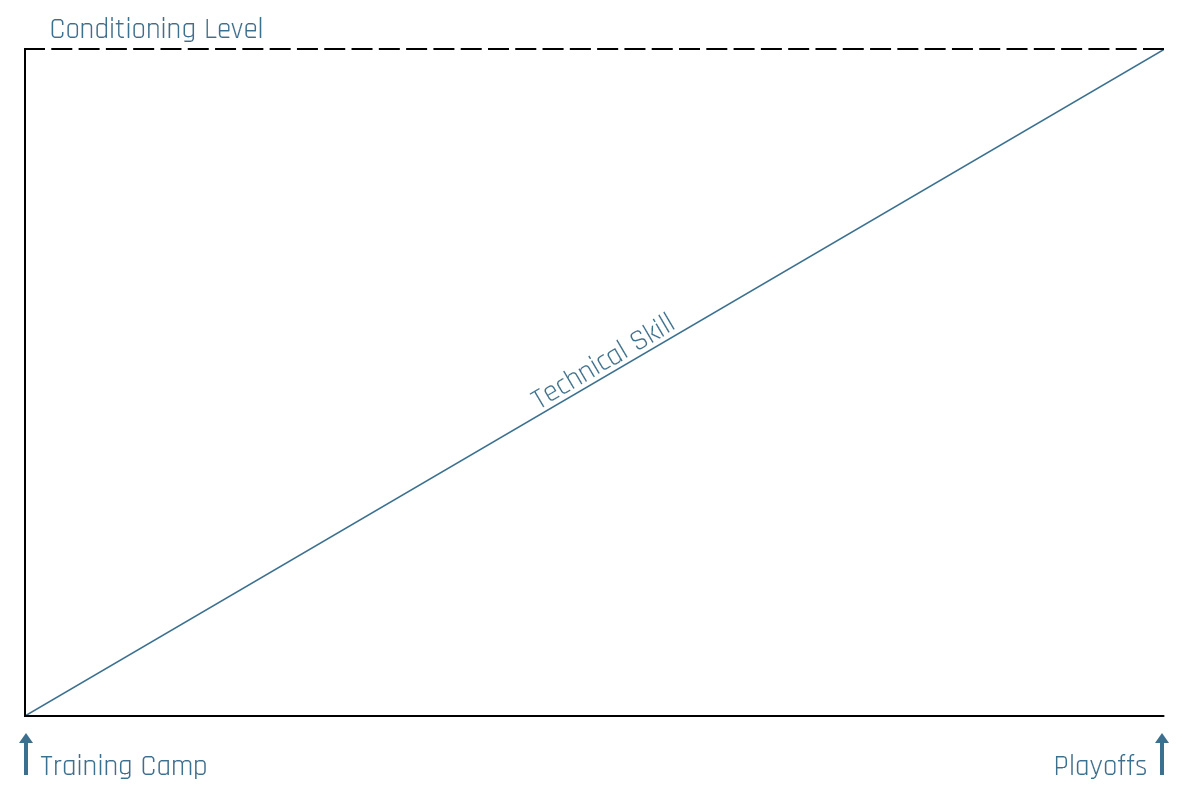
Increasing Technical Skill
The point to consider is that once you have your players in top condition, it is very easy to keep this level of conditioning. Then by the playoffs, your technical skill will have peaked, and it will meet your high level of conditioning. Therefore, you would be physically and technically ready for the playoffs. This theory has been used often with great success. The question you have to ask though is what if you could increase your conditioning level even higher than it was at training camp. Some people would not advocate this type of concept. Many people of the “old school” do not believe there is a place for off-ice conditioning during the season. This is unfortunate because it has been my experience that speed, strength, power, quickness, and aerobic endurance can be improved during the season with off-ice training.
This is even more possible for the player who may not be in the best shape early on. By participating in 2-3 off-ice workouts a week, you can expect to see very positive gains in all aspects of conditioning levels. Nevertheless, regardless of your level of condition, you should continue off-ice workouts in-season. As a coach or a minor hockey player this is your way of obtaining an advantage over your opponents who may not be training.
Strength Variables
Now that you understand the reason to continue off-ice training, lets look at the acute variables that will assist you in continuing your physical improvements. Strength is one area that people are very unsure about. Many are concerned that if you strength train to soon before a game, you will not recover in time to play. This will only occur if you perform the wrong type of workout, meaning by performing high repetition lifts. An example would be doing leg presses or squats for sets of 8-12 reps. This type of scheme will cause fatigue. The fatigue is actually caused by lactic acid, which is a metabolic byproduct of this type of exercise. The way to avoid this and to work on your strength would be to use reps in the 3-6 range and or short very powerful movements. The rep range given means you would be using a much heavier weight, which will develop strength, and allow you to recover in time for your game. The following is an example of a morning game day training session that I developed for one of my NHL clients:
- Warm-up – Cycle 5 minutes, and dynamic stretch
- Lateral hops over box – 2 sets of 12 foot contacts
- Hang cleans – 3 sets of 6
- Squat – 2-3 sets of 3-5 reps
- Standing arm press – 2-3 sets of 5-6 reps
- Hyperextension – 2 sets of 6-8 reps
- Ladder drills 6 lengths
- Dot drills 2 sets of 15 seconds.
You may have noticed that most of this article has focused on the physical component strength. The other physical capabilities are more easily developed or maintained on the ice as it pertains to in-season work. As far as strength goes, the only way to enhance it, is to overload the muscle. This can only be done efficiently in the weight room. A lack of strength will also affect your injury resilience. This means that your joints may be more susceptible to injury, if the surrounding muscles have lost size and strength. The other benefit to working on your strength is it will also have a positive effect on your speed, and power.
As a hockey player there are many challenges that you will face in physically preparing yourself for the game. In-season conditioning can be one of the most demanding aspects of your training calendar. This is especially so when you are trying to juggle school, practices, games, and social life. It takes careful planning but is very achievable. REMEMBER: THE ONLY EASY DAY WAS YESTERDAY!
Lorne Goldenberg is the President and Director of Performance for Strength Tek Fitness and has spent over 25 years as a strength and conditioning coach for numerous teams in the OHL and NHL.
